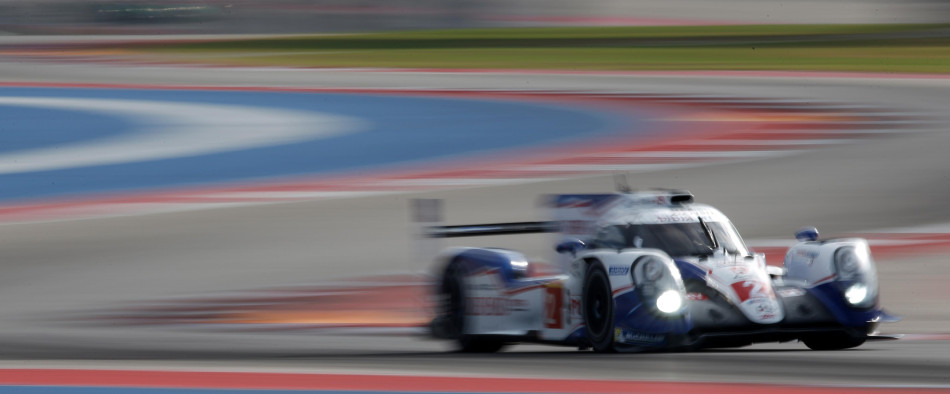This page contains archived information and may not display perfectly
WEC - 2015 6 Hours of Fuji - Facts and Figures
29.09.15
On Sunday 13 October the fourth edition of the 6 Hours of Fuji will receive the green flag to begin round 6 of the 2015 World Endurance Championship

Here are some facts and figures about the WEC in Japan, Fuji Speedway and Mount Fuji, Japan’s holy mountain that dominates the skyline of the 4.5km circuit.
- Toyota is unbeaten at the Japanese manufacturer’s home event, having won all three races between 2012 and 2014.
- Roman Rusinov, Julien Canal and G-Drive Racing won the LMP2 class in 2014 while the driver of the no28 G-Drive Racing Ligier Ricardo Gonzalez won the class in 2013 at the wheel of an OAK Racing Morgan.
- Julien Canal is the only driver to have won twice in Japan in two different classes. He took victory in 2012 in LMGTE Am in the no50 Larbre Competition Corvette and won in LMP2 last year in the no26 G-Drive Racing Ligier which he is driving again in 2015.
- Alex Wurz, Kazuki Nakajima and Nicolas Lapierre have all won twice in LMP1 (2012 and 2013).
- Honours are evenly split between the three manufacturers in LMGTE Pro with Porsche winning in 2012, Aston Martin in 2013 and Ferrari in 2014.
- Aston Martin has won the last two encounters at Fuji in the LMGTE Am class, with Larbre Competition taking the top step of the podium in 2012.
- The lap records in LMP1 and both LMGTE classes were set in 2014 but the LMP2 lap record was set during the WEC’s first visit to Japan in 2012 by Nelson Panciatici.
- Mark Webber (Porsche 919 Hybrid) is the current LMP1 lap record holder with a 1m27.759, while Aston Martin holds both LMGTE records with Stefan Mücke in LMGTE Pro and Nicki Thiim in LMGTE Am.
- The fastest lap recorded by an LMP1 car was set in 2013 during qualifying by André Lotterer in the no1 Audi Sport Team Joest Audi R18 e-tron quattro with a 1m26.235 lap with an average speed of 190.5kph. This was set during qualifying and so can’t be counted as the official LMP1 lap record.
- The fastest speed recorded at Fuji Speedway by a WEC competitor was set by Timo Bernhard in the Porsche 919 Hybrid in 2014. The German driver recorded a top speed of 316.7 kph / 196.8 mph.
- The 2013 6 Hours of Fuji had to be abandoned after only 16 laps behind the safety car due to torrential rain. Half championship points were awarded.
- Fuji Speedway was established in 1963 and originally designed as a 4km banked superspeedway but only one of the banked turns was ever constructed. The track was converted to a road course circuit and opened in 1965. The 30 degree ‘Daiichi’ banking was used as part of the circuit but a number of fatal accidents caused it to be abandoned with a change of track configuration.
- The current 4.563km / 2.835 mile layout, established in 2005, is the 5th configuration of the circuit since Fuji Speedway opened in 1965.
- At 1.5km / 0.93 miles the start finish straights is one of the longest in motorsport.
- Fuji Speedway brought the first Formula One race to Japan at the end of the 1976 season. The race had a dramatic World Championship battle between James Hunt and Niki Lauda, and in torrential rain, Hunt earned enough points to win the title. This battle between Lauda and Hunt was recently immortalised in the 2013 film ‘Rush’.
- The 1000km of Fuji was first held in 1967 and ran continuously until 1992, and more recently in 1999 and 2007. In 2012 the World Endurance Championship introduced the 6 Hours of Fuji, the 2014 race winners recording a distance of 1076km at the end of the 6 Hours.
- The World Sportscar Championship was held at Fuji Speedway between 1982 and 1988, with Stefan Bellof setting the fastest ever recorded lap at Fuji in a Porsche 956 in 1983. Bellof’s time of 1m10.02 was set on the old 4.360km / 2.709 mile track.
- Mount Fuji, or Fuji San as the mountain is reverently referred to by the Japanese, provides one of the most dramatic backdrops to any race circuit in the world. Mount Fuji is one of three holy mountains in Japan, Mount Tate and Mount Haku being the others.
- Mount Fuji is 3,776.24 m / 12,389 ft high and is actually an active volcano which last erupted in 1707/08.
- Mount Fuji was added to the World Heritage List as a Cultural Site by UNESCO on June 22, 2013.

 Facebook
Facebook Twitter
Twitter